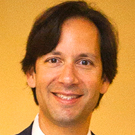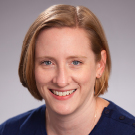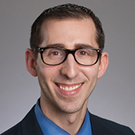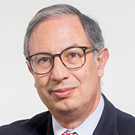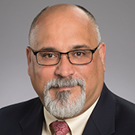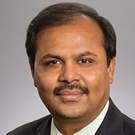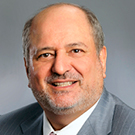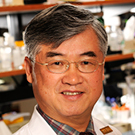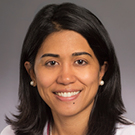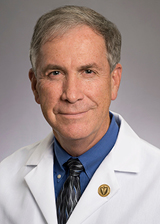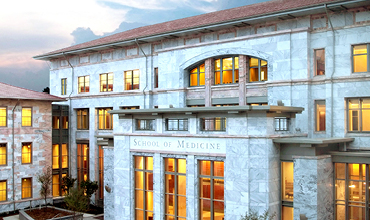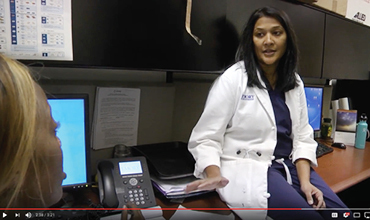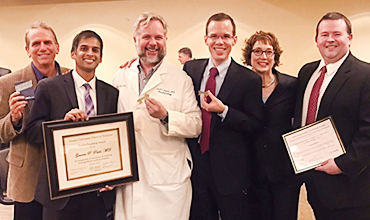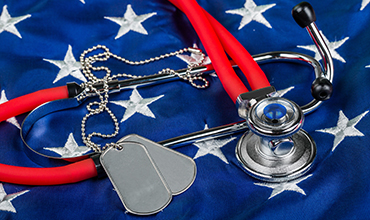If this message displays incorrectly, please view the web page

| FEBRUARY 2017 | ||||||||||
Notables
Vasilis Babaliaros (cardiology) received a National Heart, Lung, and Blood Institute Orloff Science award for “exceptional talent, vision, and insight into structural heart interventional procedures” for his IDE trial that demonstrated the utility and safety of transcaval TAVR. Elisabeth Binder (psychiatry) was awarded the Eva King-Killam Research Award from the American College of Neuropsychopharmacology.
Andrea Crowell and Jeffrey Rakofsky (both psychiatry) received the 2017-2018 Faculty Innovation in Education Award from the American Board of Psychiatry and Neurology. Read more.
Carlos del Rio (medicine) has been appointed interim executive associate dean, clinical affairs for the Grady campus. Del Rio, the Hubert Professor and Chair of the Department of Global Health at Rollins, is co-director of the Emory Center for AIDS Research and co-PI of the Emory-CDC HIV Clinical Trials Unit. Charles Epstein (neurology) received the 2017 Pierre Gloor Award from the American Clinical Neurophysiology Society.
Jaffar Khan (neurology) has been appointed assistant dean for education, and will serve as the primary liaison between the SOM and Grady Hospital concerning student and resident education.
Wilbur Lam (pediatrics) and Suresh Ramalingam (medical oncology) were inducted into the American Society for Clinical Investigation.
Raymond Schinazi (pediatrics) received the Scrip Lifetime Achievement Award.
Dong Moon Shin (hematology) was named a fellow of the American Association for the Advancement of Science. David Smith (biochemistry), director of the Emory Comprehensive Glycomics Core, received the University of Texas Graduate School of Biomedical Sciences 2016/2017 Distinguished Alumnus Award. Parmi Suchdev (pediatrics) was named Emory Global Health Institute’s associate director. He is also a medical epidemiologist in the Nutrition Branch of the CDC and a pediatric hospitalist at Children’s Healthcare of Atlanta.
Mylin Torres (radiation oncology) was selected to hold the Louisa and Rand Glenn Family Chair in Breast Cancer Research and was named director of the Glenn Family Breast Center at Winship. Events Graduate Medical Education Open House, March 3, 10 a.m. - 1 p.m., SOM 327. Attendees will be able to meet and mingle with GME's Associate Dean Maria Aaron and Assistant Dean Philip Shayne. Light refreshments and door prizes. Contact the GME office, gme@emory.edu, or 404-727-5658 for more information. Partners in Treatment Innovation for Functional Neurological Disorders conference: Patients, Families, and Providers. March 3 and 4, Emory Brain Health Center, 12 Executive Park Drive NE, Atlanta. More here. Hamilton E. Holmes Memorial Lecture, March 15, 5 p.m., SOM 110. The Rev. Dr. Betty Deas Clark, first female pastor in nearly 200 years at Mother Emmanuel AME Church, Charleston, S.C., site of the 2015 shooting of nine members attending Bible study. Medical Education Day, March 20, noon to 5 p.m., SOM 120. Keynote speaker Tait Shanafelt, director of the Mayo Clinic physician well-being program. Workshops and other sessions focused on learner and health care provider wellness. Heel to Heal Superhero 5K, April 22, Lullwater Park Preserve. Hosted by the Emory Physician Assistant program Class of 2018 to raise funds for the medically underserved. More here. Charles R. Hatcher Jr., MD, Award for Excellence in Public Health presentation, April 24, 4 p.m., Klamon Room in the Claudia Nance Rollins Building. Recipient is William Eley, EAD for medical education and student affairs and professor of hematology and oncology. RSVP to Nancy Sterk, nsterk@emory.edu. State of the WHSC Address by EVPHA Jon Lewin. April 25, 2017, 4:30 p.m., WHSCAB auditorium. Reception to follow. Academic & Industry Intersection Conference, May 10, 9 a.m. to 1:30 p.m. Georgia Tech Research Institute Conference Center, "From Sensors to Big Data: Personalized & Population Health in the Digital Age." Keynote speaker, Neil Gomes, VP for Technology and Consumer Experience, Thomas Jefferson University and Jefferson Health System. More here. Dean’s Distinguished Lecture, May 16, 5:30 p.m. SOM 110, Nancy Newman (ophthalmology) will present "Mitochondrial Blindness: An Emory Story." Followed by award reception. |
|
Fighting Superbugs
As most of us are well aware, drug-resistant "superbugs" are multiplying, causing infections that are unable to be treated with our normal arsenal of antibiotics. A recent example: the September case of Klebsiella pneumonia that killed a Nevada woman after resisting a total of 26 different antimicrobial drugs. Antibiotic-resistant infections, including Gram-negative bacteria, C. difficile, and S. aureus (MRSA), kill 23,000 people in the United States each year and sicken many others. As an academic health center, we carefully monitor these dangerous infections. The clinical microbiology laboratory at Emory University Hospital, directed by Eileen Burd (pathology), examines more than 800 cultures a day to determine which bacteria are making patients sick and how best to treat them. Let me share how just one of these cases led to an important discovery. In the fall of 2013, Burd and her team noticed something strange in a sample taken from a kidney transplant patient. A strain of Gram-negative baccillus, E. cloacae, had infected the patient and was proving resistant to most of the usual antibiotics, so the team tried a "last-ditch" drug, colistin. At first, colistin appeared to work, killing off most of the bacteria. On closer inspection, though, it seemed that a small number had survived. David Weiss (infectious diseases), head of the Emory Antibiotic Resistance Center (ARC), was called in to consult. He found that the bacteria had mounted "stealth" resistance—a small colony, which normally would have gone undetected, remained. Even more troubling, these survivors appeared to expand in the presence of colistin. Weiss is now studying these "persisters." Collaboration between front-line patient care teams and laboratory scientists led to this fortuitous discovery. Due to such alliances and the ARC, Emory has emerged as a leader in the battle against superbugs and antibiotic resistance. This is a fight we must win. Editor's note: Check out the interview with Monica Farley (infectious disease) on antibiotic-resistant infections in the Winter 2017 issue of Emory Medicine in the Q&A here. "We know about MRSA and C. diff, but I think the next wave is going to be Gram-negative organisms," Farley says. "An example is CRE (carbapenem-resistant enterobacteriaceae). Recently, we saw a case of CRE, which looks like it was spread by medical tourism. It was a post-operative infection, and when we examined the isolate, it was the New Delhi (NDM) version, and not the type of CRE normally seen in Atlanta. We're really seeing a global spread of these resistant organisms.") What happens to our molecules when we move?
The NIH has tasked researchers around the country to help create a comprehensive map of the molecular changes that occur in the body in response to physical activity. A metabolomics, proteomics, and lipidomics ("omics") analytics team led by Emory with collaborators at Georgia Tech will receive $13.6 million over six years as part of the national Molecular Transducers of Physical Activity in Humans Program (MoTrPAC) effort. The information they uncover could help researchers and doctors develop personalized exercise recommendations. National teams of researchers will collect samples from peoples of various races, ethnic groups, genders, ages, and fitness levels, and Emory and Georgia Tech researchers will analyze samples. The project’s four co-investigators include Dean Jones (pulmonology), director of the Emory Clinical Biomarkers Laboratory; Eric Ortlund (biochemistry), scientific director of the Emory Integrated Lipidomics Core; Nicholas Seyfried (biochemistry, neurology), scientific director of the Emory Integrated Proteomics Core; Karan Uppal (bioinformatics), leader of the bioinformatics core for the grant, and biochemist Facundo Fernández of Georgia Tech. The analytical laboratories are integrated through the NIH-supported Atlanta Clinical and Translational Sciences Institute. "Emory and Georgia Tech teams have been successfully collaborating on other 'omics' projects, and this synthesis of approaches at our two universities is a powerful way to understand the biochemistry involved in exercise and make a significant contribution to this national effort," Jones says. Bright Idea Saves $ and Energy
During the past two years, the SOM has worked to secure a grant from the Community Foundation of Greater Atlanta. With matching grant support from the SOM Dean's Office, the school received a grant from the Grants to Green Program that allowed replacement of existing fluorescent lighting with LED fixtures that use significantly less electricity at a lower cost. The work was done mainly during overnight hours by Greenspeed, and the project was completed in December. The SOM building is projected to decrease its electricity usage by 25% and save $104,000 in electricity costs over the next year. Thanks to those who worked on the project: Executive Associate Dean Bill Eley, staff members Deirdre Abrams, Barbara Buehrer, and Shelby Smith, and the facilities management project managers. New Hidden Gem: Dr. Bijal Shah
Find out why Bijal Shah (emergency medicine) switched careers from business to medicine, what it's like balancing kid time with emergency room shifts, how she has increased HIV screenings at Grady and beyond, and why she treats every patient like family. View video here. Faculty Appreciation
The annual Emory Medicine Celebration of Faculty Excellence was held in Cox Hall in December to recognize stellar faculty accomplishments in patient care, research, and education. To view the full list of honorees and photos from this collegial event, go here. Innovative Vision Research
Veterans are at higher risk of eye disease than the average person. The most common eye problems veterans develop are cataracts, glaucoma, macular degeneration, and eye damage from diabetes. The Center for Visual and Neurocognitive Rehabilitation (CVNR) at the Atlanta VA Medical Center recently received notification that the center has been renewed for another five years. "The investigators within the CVNR are addressing a broad range of topics that share the theme of improving health care for veterans. The recognition of this center by the VA supports the remarkably high quality and diversity of programs that span basic to clinical research," says Michael Hart (medicine), associate chief of staff for research at the Atlanta VAMC. Examples of these projects include expanding technology-based eye care services, which allow patients to be checked for eyeglasses and screened for common eye diseases at VA communty-based outpatient clinics, led by April Maa (ophthalmology); developing a precision navigation app for people who are blind, led by rehabilitation research engineer David Ross (public health), and spatial cognitive training for blind veterans, led by Krish Sathian (neurology). |

